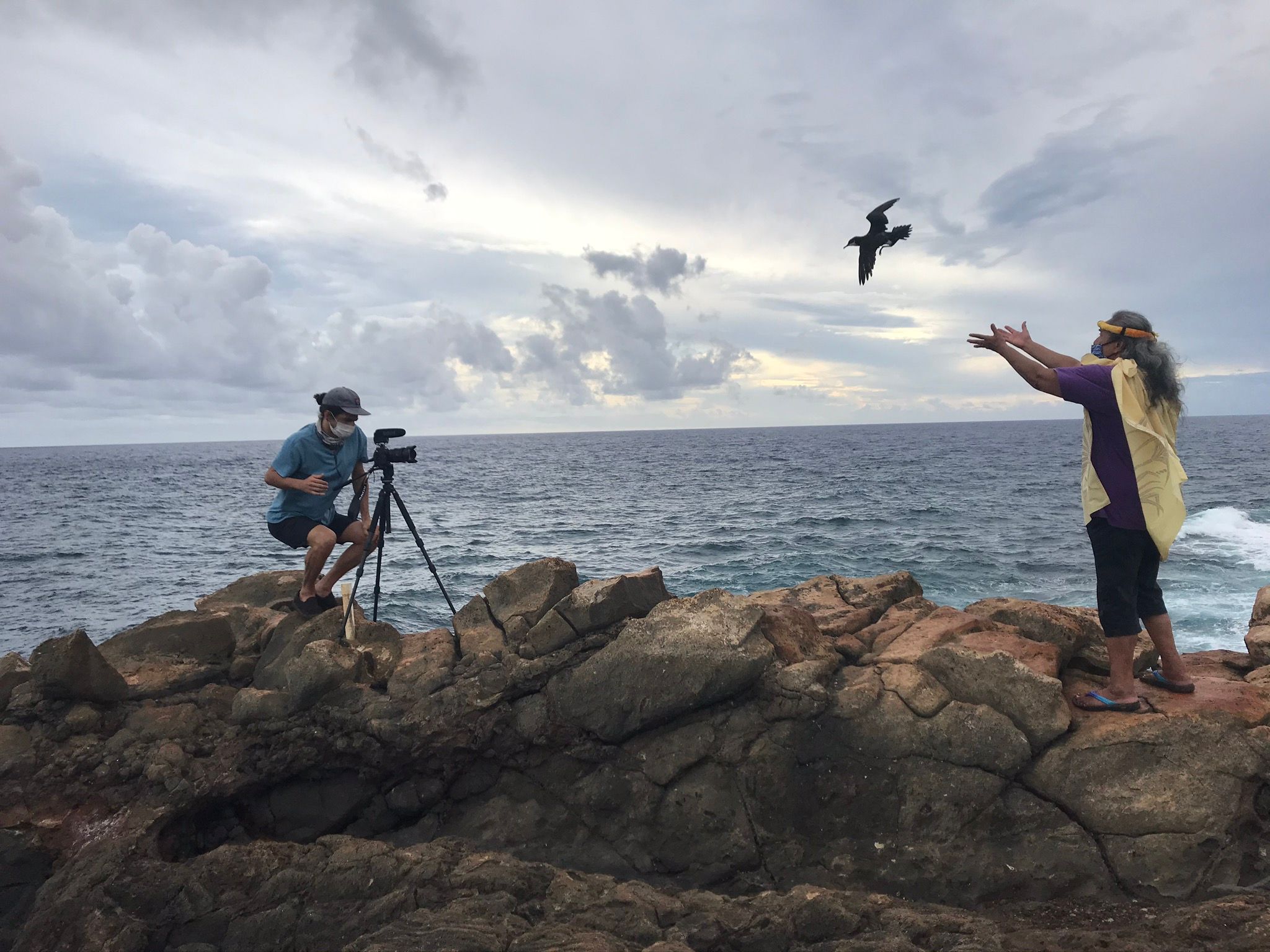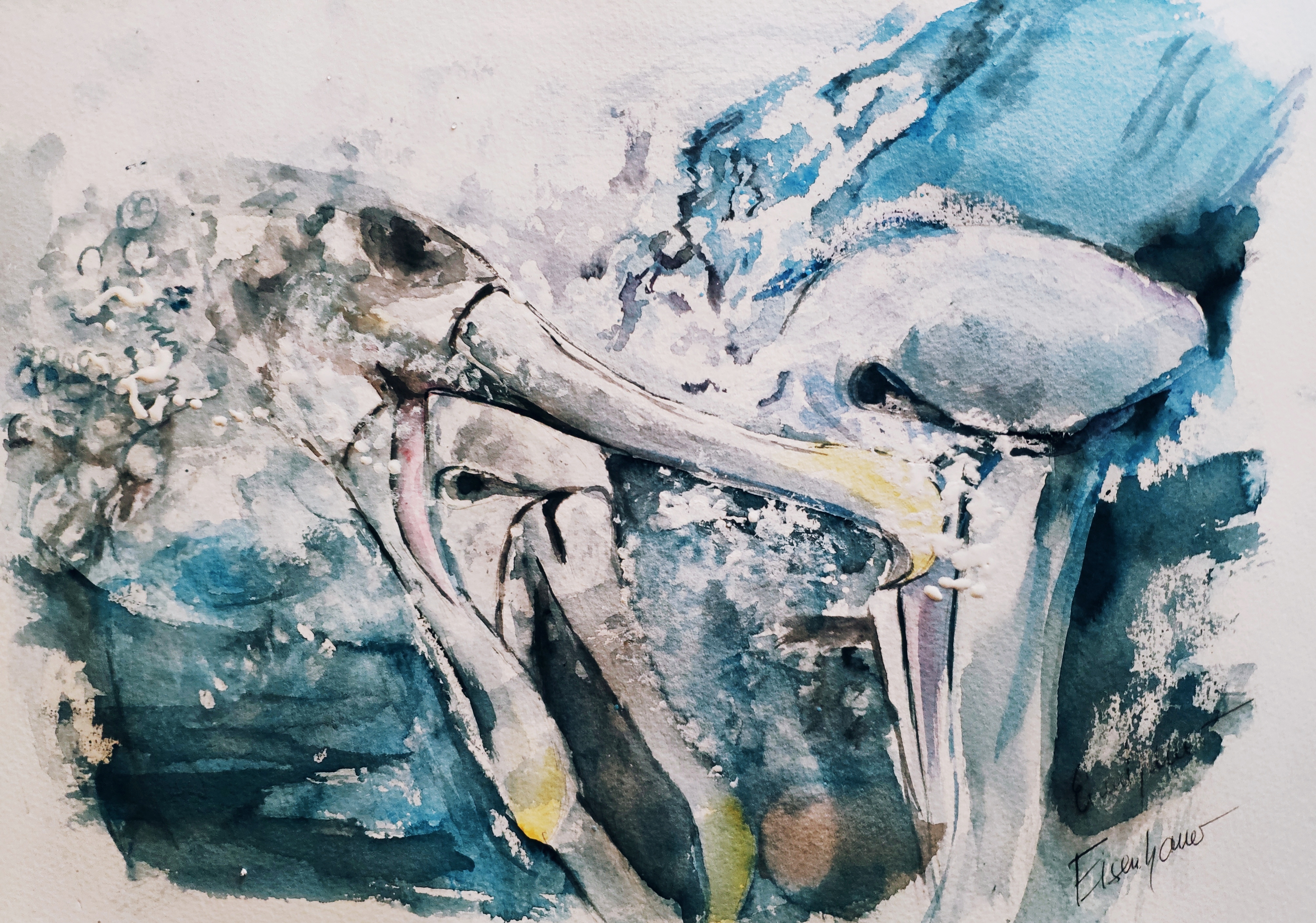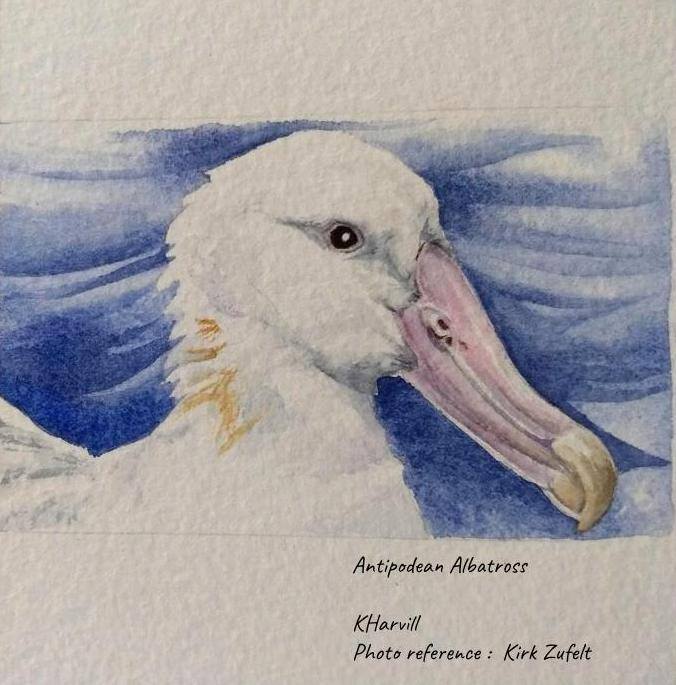
Breeding under trees: Southern Buller's Albatrosses on North East Island, Snares Islands; from the report
David Thompson (National Institute of Water & Atmospheric Research, Wellington, New Zealand) and Paul Sagar have reported to the Conservation Service Programme of New Zealand’s Department of Conservation on research conducted on Near Threatened Southern Buller's Albatrosses Thalassarche bulleri bulleri on the sub-Antarctic Snares Islands.
The report’s executive summary follows:
“This report presents a summary of the results of counts of southern Buller’s albatrosses Thalassarche bulleri bulleri breeding at the Snares Islands|Tine Heke from 11-17 March 2020 and compares these results with those obtained using similar methods during 1969, 1992, 1997, 2002, 2014 and 2019. In addition, the results of detailed demographic studies at three study colonies are presented. The count used similar methods, and was completed at a similar time of year, to previous counts completed during 1969, 1992, 1997, 2002 and 2014. The current survey of North East Island was incomplete due to adverse weather. However, the total of 5164 breeding pairs recorded along the East Coast, North Promontory, South Coast and West Coast was very similar to the 5305 breeding pairs estimated in the same areas in 2014. This result indicates that the increase in size of the breeding population over the period 1969-2002 has not continued. An additional 621 breeding pairs were estimated on Broughton Island in 2019. Demographic studies at the three study colonies on North East Island have been undertaken annually 1992-2017, and so this report incorporates some of these data in the current analysis. Estimates of the numbers of breeding pairs, made by recording the contents of each nest mound, increased in all three colonies over the numbers recorded during 2019. With the assumption that the combined total number of breeding pairs in the three study colonies was representative of North East Island as a whole then the breeding population probably peaked in 2005-2006 and has since undergone marked annual variations. A total of 245 birds previously banded in the study colonies as breeding adults of unknown age were recaptured. A further 77 breeding birds were banded in the study colonies - these are presumed to be first-time breeders. Estimates of annual survival of birds banded as breeders continued to decline, with an estimate of 0.889 in 2017. During the period 1992-2004 all chicks that survived to near-fledging in the study colonies were banded and survival rates monitored via return to the study colonies in subsequent years. This year 125 of these birds were recaptured, with birds from cohorts banded between 1999-2004 being recaptured for the first time. This demonstrates the long-term monitoring required to obtain reliable estimates of survival of such known-age birds. Of these 162 known-age birds recaptured, 13 were found breeding for the first time, and so were recorded as being recruited to the breeding population. A bird banded as a chick on Big Solander Island in 2002 was recaptured on an empty nest. One bird banded as a chick in 1972, was recaptured at 48 years of age. Fifty Global Location Sensing (GLS) tags were attached to the metal leg bands of breeding birds in the Mollymawk Bay study colony; these will be retrieved during 2021 and 2022. A GPS device was used to record latitude and longitude coordinates at waypoints around the perimeter of each of the three study colonies, and trail cameras will be installed in 2021 at nest sites determined from this years study.”
Reference:
Thompson, D. & Sagar, P. 2020. Population studies of southern Buller's albatrosses on the Snares Islands|Tine Heke. Prepared for Conservation Services Programme, Department of Conservation June 2020. [Wellington]: NIWA. 24 pp.
John Cooper, ACAP Information Officer, 02 November 2020

 English
English  Français
Français  Español
Español 


